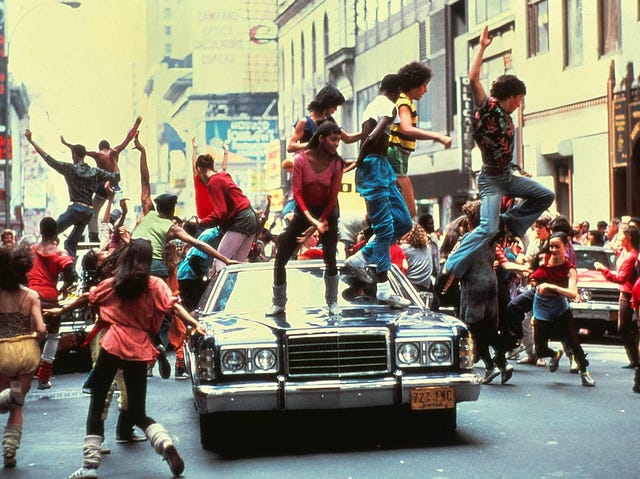
40 Years Later, It's Clear 'Fame' Will Live Forever
Debbie Allen, Irene Cara, and Erica Gimpel talk to
Shondaland about the 40th anniversary of the classic film.
For many young artists, seeing Fame for the first time is life altering. Alan Parker's classic 1980 film succinctly validates the boundless hope and promise of aspiring actors, dancers, singers and musicians and makes them feel seen, appreciated and loved.
Fame also turned Debbie Allen, an award winning dancer and choreographer turned director, into a household name and trumpeted star Irene Cara as a triple-threat capable of carrying the film and belting out the unforgettable title track. The flick also put the whole world on notice that the unbridled physicality of dancer Gene Anthony Ray would inhabit our imaginations forever.
Most of all, the movie’s $42 million box-office success and its two Oscar wins paved the way for a six-season television spinoff that inspired the inception of performing arts high schools all over the globe.
“Fame told viewers they could aim for the stars and with hard work, possibly reach them,” says Jawn Murray, a TV host and pop culture expert. “That created a 'why not' mentality for a lot of people and gave them the gumption to try out for shows ranging from Star Search to American Idol.”
In time for the 40th anniversary of Fame, Shondaland caught up with Allen, Cara and more to unpack how the film came to be, its undeniable impact on pop culture, and why the brand’s legacy has endured.
"It was a glorious experience."

Ask Allen to recall what drew her to the role of dance teacher Lydia Grant and she jokes to herself, and anyone listening, that she must “remember, remember, remember,” quoting a line from the beloved Fame theme song.
“I remember auditioning. I actually read for Irene’s role, Coco, but they got the right one,” Allen, an executive producer, director and recurring star on Grey’s Anatomy, tells Shondaland. “Coco was her vibe. And I was cast as Lydia, who was originally written as an older student. After the film was edited, I was turned into a young teacher. But I was supposed to be Coco’s nemesis, doing everything that she might want to do.”
Prior to Fame, Allen had starred on Broadway as Anita in West Side Story. She also had small roles on Good Times, The Fish That Saved Pittsburgh, and Roots: The Next Generations. But Fame was a game changer for the acclaimed dancer.
“The movie became everything,” says Allen, whose role as Lydia grew exponentially on the TV spinoff. She also earned two Emmy awards for choreographing the series, and Allen became the first African-American woman to win a Golden Globe for Best Television Actress in a Comedy or Musical. Nearly 35 years later, Tracee Ellis Ross would follow in her footsteps to become only the second black actress to triumph in that category. For Allen — who has gone on to amass an impressive film and TV resume since Fame was released in 1980 — shooting the film was an amazing experience.
Allen holds the movie’s behind-the-scenes conviviality dear. Most of the interior scenes were shot inside New York’s abandoned Haaren High School on 58th and 10th in Manhattan, and the school later became the John Jay College of Criminal Justice. Meanwhile, the TV spinoff called an MGM soundstage in Los Angeles its home.
“There were a lot of people in the movie that I knew from the dance world. We all danced together,” Allen adds fondly. “Louis Falco was the choreographer [on the film]. Michael DeLorenzo (New York Undercover), who was a dancer in the movie, went on to have a much bigger part on the show. Louis Venosta was a principal dancer and he became a screenwriter (Bird on a Wire and The Last Dragon). I went on to direct and co-produce A Different World. There was a lot of young talent in that ensemble. It was a glorious experience.”
"The whole vibe of the original movie was about the grittiness of New York."
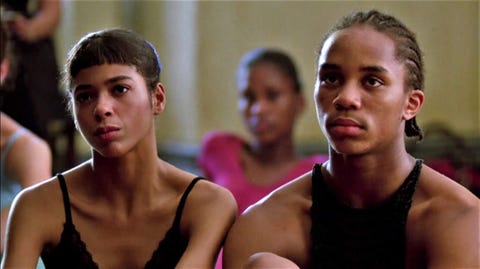
Producers approached Cara because they liked her vocals in 1976’s Sparkle. Although Cara received critical and fan praise for her acting in the musical, the powers-that-be behind Fame wanted to explore her vulnerability and range. Both came in handy when her character, Coco Hernandez, had a nasty encounter with a skeevy amateur porn director.
“The whole vibe of the original Fame movie was about the grittiness of New York and New York kids. New York was a character, and I was born and raised in the Bronx,” The Electric Company alum says. “I’m a South Bronx girl and was way before J. Lo. All of my auditions were just for acting. The producers knew I could sing. It was wonderful for me, mainly because I had worked a lot around New York and was known as a prominent child performer. But this was a Hollywood movie in my hometown.”
Just like Allen, who knew most of the dancers, Cara says she also gave Fame composer Michael Gore some recommendations about who he should hire to make the film's soundtrack sound superior.
“I brought a lot of New York’s greatest session singers to Michael. He didn’t know Luther Vandross. I did. He didn’t know about Vicki Sue Robinson. I did,” Cara says. “Michael wasn’t in with all the badass session players and singers that I knew. I never got any money for it. Never got acknowledged. I wrote 'Hot Lunch' to this very cool baseline that he came up with – that was the whole damn song.”
But Cara’s hard work proved beneficial not long after Fame.
“A few years later, I went on to win two Grammys for Flashdance and an Oscar [for Best Original Song],” she says. “I won a Grammy for Best Pop Female vocal, which was a big deal as a black Latina. I don’t remember any others winning that back then.”
For Cara, it’s all about performing. “When I was a dancer, I studied under Debbie and she was incredible. Like Coco, I was a triple threat,” she adds. Like Allen, Cara also co-starred in Roots: The Next Generations. “The one thing that I regret is that I didn’t keep up my dance regimen when I got into my 40s.”
While Fame catapulted Allen and Cara to stardom, no one moved their body like Gene Anthony Ray, who played Leroy Johnson, one of the film's most memorable characters. More of a street dancer than a professionally trained one, the Harlem native attended the High School of the Performing Arts for a year before administrators kicked him out for being a rule breaker. Ray later attended Julia Richman High School (now known as the Julia Richman Education Complex) and skipped one day to audition for Falco, Fame's choreographer. And the rest is movie history.

“Gene Anthony Ray was a brand new young star, and he was Leroy Johnson personified,” Allen says lovingly of the late dancer who died from stroke and HIV complications in 2003 at the age of 41. After the film, Ray joined Allen, and a handful of others, in the TV adaptation of the film. “He had boundless energy, was dynamic and powerful and, as a dancer, was really edgy. He would cuss somebody out in a heartbeat. But then again, he could be very open and kind."
As a newcomer to film, Ray also went above and beyond to prove himself. “One time, he was working so hard when we were shooting the movie, I said, ‘Honey, calm down,’” Allen recalls. “I went and got an ice pack and put it on the back of his neck. I said, ‘You’re going to have to do this a lot more times.’ And he said, ‘I am?’ And I said, ‘Yes! It’s a movie.’ I was taking care of him then.”
Cara also has fond memories of Ray.
“We were all close to Gene,” she says. “He was the youngest, and believe me, he was a handful — a handful. But we loved him, and he was a brilliant, natural actor and a phenomenal dancer."
Ray was just 18 when the film hit theaters and had come from tough circumstances. Still, Cara says the cast treated him like a little brother. “We all just worshiped him as much as we worked hard to put up with him," she remembers. "He was so young and wild. I had been a professional since I was five years old. He was raw. We all had to babysit him. But it was worth it because what came out on screen was remarkable. We all miss him dearly.”
Erica Gimpel, who took over the role of Coco in the TV version of Fame, says Ray operated on a higher frequency than most. “He was unlike anyone I’ve ever met,” says Gimpel, who can now be seen on CBS' God Friended Me. “I had a crush on him and was terrified of him all at the same time. Dancers are so much freer with their bodies. He was always in tights."
Despite his intense nature, Ray often returned his co-stars' admiration. “There was this one song called 'Showtime.' It was a number all about me and I was dancing and singing and Gene came to watch when we were filming,” recalls Gimpel, who also attended the High School of the Performing Arts and was the youngest on set of the show. “I remember I finished and he ran up onstage and lifted me up and said, ‘Girl, you were dancing.’ And I was like, ‘Oh my God!’ His approval of me meant so much.”
"There is a certain freedom of spiritual expression in a performing arts high school that gets people started early."
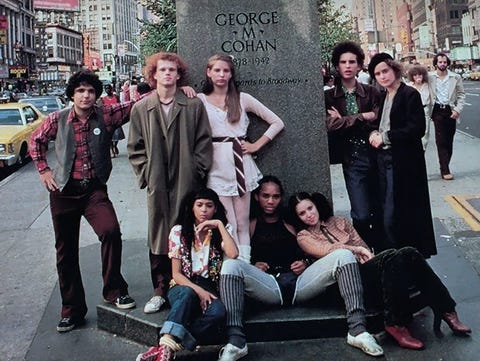
After seeing everyone else dance, Lee Curreri realized he was better at watching dance than doing it, he says with a laugh. Curreri, who is a composer now, starred as Bruno Martelli in the film. He’s the pianist who pens the “Fame” song that has all of his classmates dancing in the street in front of school. He went on to co-star on the first three seasons of the TV series and has been part of Fame reunions in America, Italy and the United Kingdom.
“There is a certain freedom of spiritual expression in a performing arts high school that gets people started early. It’s almost like a license to be rebellious,” Curreri says of Fame’s lasting legacy. The Yonkers native was attending the Manhattan School of Music when his teacher recommended him for the audition, which obviously worked out. “And people who were at just the right age when the movie and the show came out saw this and went, ‘Wow! This is it. This idea is calling me. This show is calling me.’”
Because of this, Fame also sparked the emergence of performing arts high schools, from Istanbul to Allen’s native Houston and everywhere in between.
“Most people didn't have the option of attending a performing arts high school,” pop culture expert Murray says. “Even the idea of one seemed fictional. But the High School of Performing Arts (now known as Fiorello H. LaGuardia High School of Music & Art and Performing Arts) was a real thing and inspired other cities to open similar schools, if not expand arts programming in their regular schools.”
“I was a child living in a small country town in Virginia when Fame premiered and it was my first time seeing a multicultural cast depicted like that,” Murray continues. “It really showcased marginalized groups in a way that empowered them and effectively captured their journeys. I think Fame’s ability to present aspiring creatives working towards a bigger dream, while overcoming various obstacles, really resonated and that's why diehard fans have remained loyal to the franchise.”
Although the TV series sanitized the grit, and even eliminated Montgomery’s sexual preference all together – he comes out as gay in the movie but not on the show – Gimpel says countless fans have come up to her over the years to thank her for being around during a time of need.
“Fans all over the world tell me stories about being gay young men who were terrified to come out,” Gimpel says. “And they say, ‘You don’t know how much this show saved my life.’ Or ‘I didn’t feel accepted. This show made me feel accepted.’”
Influencing an entire generation is a great way to — as the song goes — live forever. And it's clear Fame has done just that.


























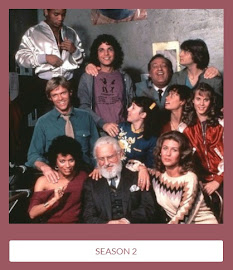

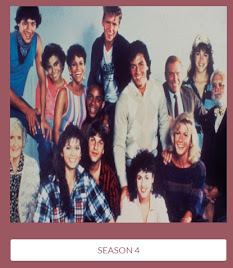
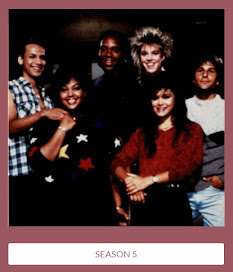











No comments:
Post a Comment